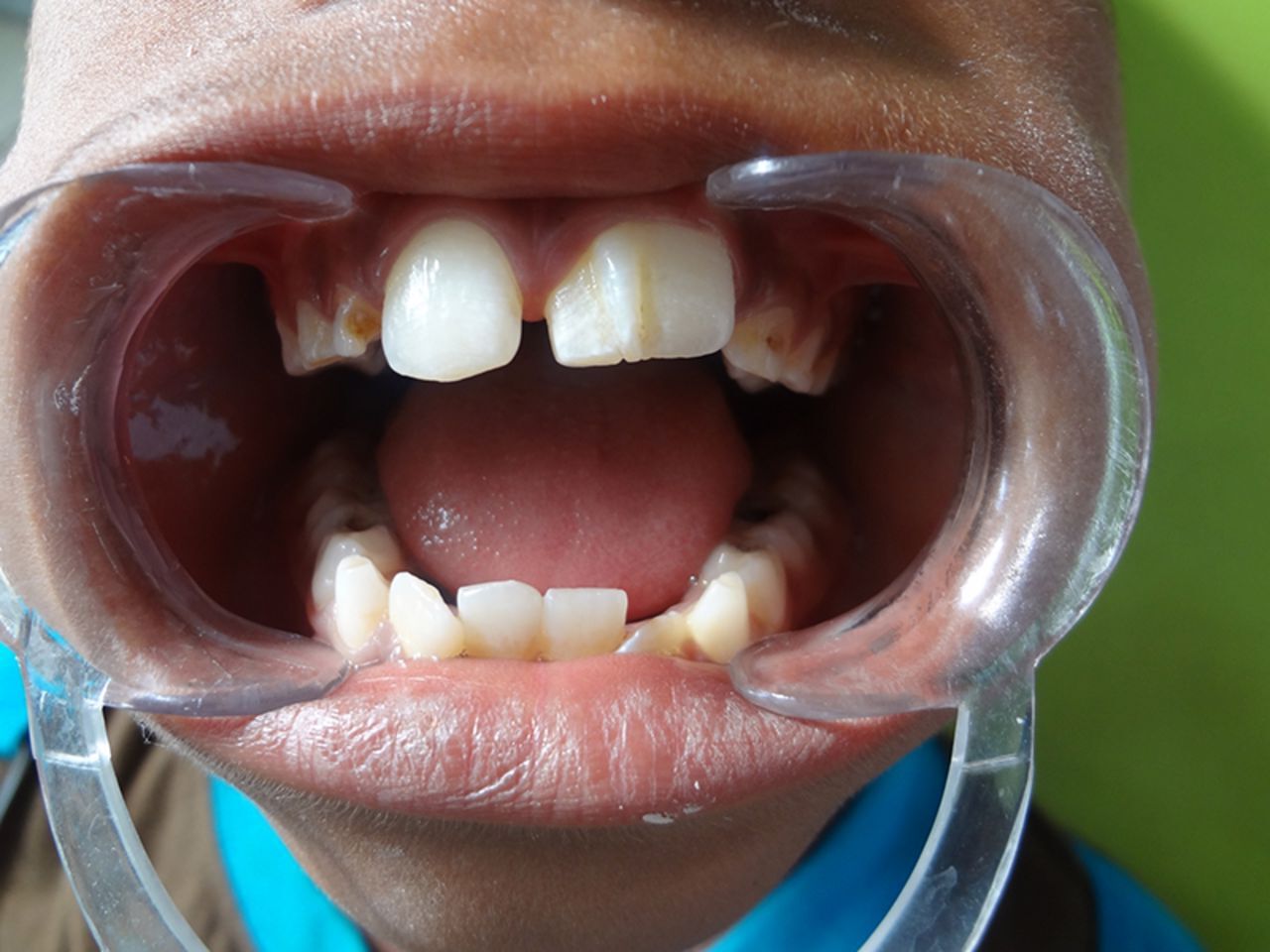
Did you know that incisors fused to canines can occur in both children and adults? This dental anomaly, known as tooth fusion, happens when two teeth develop together, forming a single large tooth. Tooth fusion can affect both primary (baby) and permanent (adult) teeth, often leading to unique dental challenges. While it might sound rare, this condition is more common than you might think. Understanding the causes, symptoms, and treatments for fused teeth can help you manage this condition effectively. Whether you're a parent noticing something unusual in your child's smile or an adult experiencing dental issues, knowing more about fused teeth can make a big difference. Let's dive into 25 fascinating facts about incisors fused to canines!
Key Takeaways:
- Incisors are the sharp front teeth used for cutting food. Fused incisors, when two teeth join together, can affect appearance and may require orthodontic treatment for correction.
- Genetic and environmental factors can cause fused incisors. Treatment options include orthodontic treatment, dental bonding, or extraction in severe cases. Regular dental check-ups are essential for monitoring oral health.
What are Incisors?
Incisors are the front teeth located in the upper and lower jaws. They are primarily used for cutting food. Let's dive into some fascinating facts about these essential teeth.
- Humans typically have eight incisors, four on the top and four on the bottom.
- Incisors are the first teeth to erupt in children, usually around six months of age.
- These teeth have a single root, unlike molars which have multiple roots.
- Incisors are the sharpest teeth in the mouth, designed for cutting food into manageable pieces.
- The shape of incisors is flat with a thin edge, making them perfect for slicing.
Fused Incisors: A Rare Phenomenon
Fused incisors occur when two teeth join together during development. This can happen in both primary (baby) and permanent teeth.
- Fused incisors are more common in primary teeth than in permanent teeth.
- This condition can affect the appearance of the teeth, often making them look larger or irregular.
- Fused incisors can sometimes lead to crowding in the mouth, requiring orthodontic treatment.
- The fusion can occur between two incisors or between an incisor and a canine.
- Fused teeth share a common dentin but have separate pulp chambers.
Causes and Diagnosis of Fused Incisors
Understanding the causes and how to diagnose fused incisors can help in managing this dental condition effectively.
- Genetic factors play a significant role in the occurrence of fused incisors.
- Environmental factors, such as trauma during tooth development, can also lead to fusion.
- Fused incisors can be diagnosed through dental X-rays, which reveal the shared dentin and separate pulp chambers.
- Dentists may also use visual examination to identify fused teeth based on their size and shape.
- Early diagnosis is crucial for planning appropriate treatment and preventing complications.
Treatment Options for Fused Incisors
There are several ways to manage and treat fused incisors, depending on the severity and individual needs.
- In some cases, no treatment is necessary if the fused incisors do not cause any functional or aesthetic issues.
- Orthodontic treatment, such as braces, can help in aligning the teeth and creating space.
- Dental bonding or veneers can improve the appearance of fused incisors.
- In severe cases, extraction of the fused teeth may be necessary, followed by orthodontic treatment.
- Regular dental check-ups are essential for monitoring the condition and ensuring proper oral health.
Interesting Facts About Incisors
Beyond their basic functions and occasional fusion, incisors have some intriguing aspects worth noting.
- Incisors are the most visible teeth when you smile, making them crucial for aesthetics.
- They play a vital role in speech, helping to form sounds like "th" and "f."
- Incisors are more prone to wear and tear due to their cutting function.
- Animals like rodents have continuously growing incisors, which they need to gnaw on objects to keep them at a manageable length.
- The word "incisor" comes from the Latin word "incidere," which means "to cut."
Understanding incisors and their occasional fusion can help in maintaining good dental health and addressing any issues that arise.
Final Thoughts on Incisors Fused
Incisors fused together might seem like a rare dental anomaly, but they offer a fascinating glimpse into human biology. These teeth can impact oral health, appearance, and even self-esteem. Understanding the causes, from genetic factors to developmental issues, helps in managing this condition effectively. Treatments vary, from simple cosmetic fixes to more complex orthodontic solutions. Regular dental check-ups are crucial for early detection and management. While fused incisors might pose challenges, modern dentistry provides numerous ways to address them. Awareness and timely intervention can make a significant difference. So, if you or someone you know has this condition, consult a dental professional for the best course of action. Remember, a healthy smile is always within reach, no matter the dental quirks.
Frequently Asked Questions
Was this page helpful?
Our commitment to delivering trustworthy and engaging content is at the heart of what we do. Each fact on our site is contributed by real users like you, bringing a wealth of diverse insights and information. To ensure the highest standards of accuracy and reliability, our dedicated editors meticulously review each submission. This process guarantees that the facts we share are not only fascinating but also credible. Trust in our commitment to quality and authenticity as you explore and learn with us.
